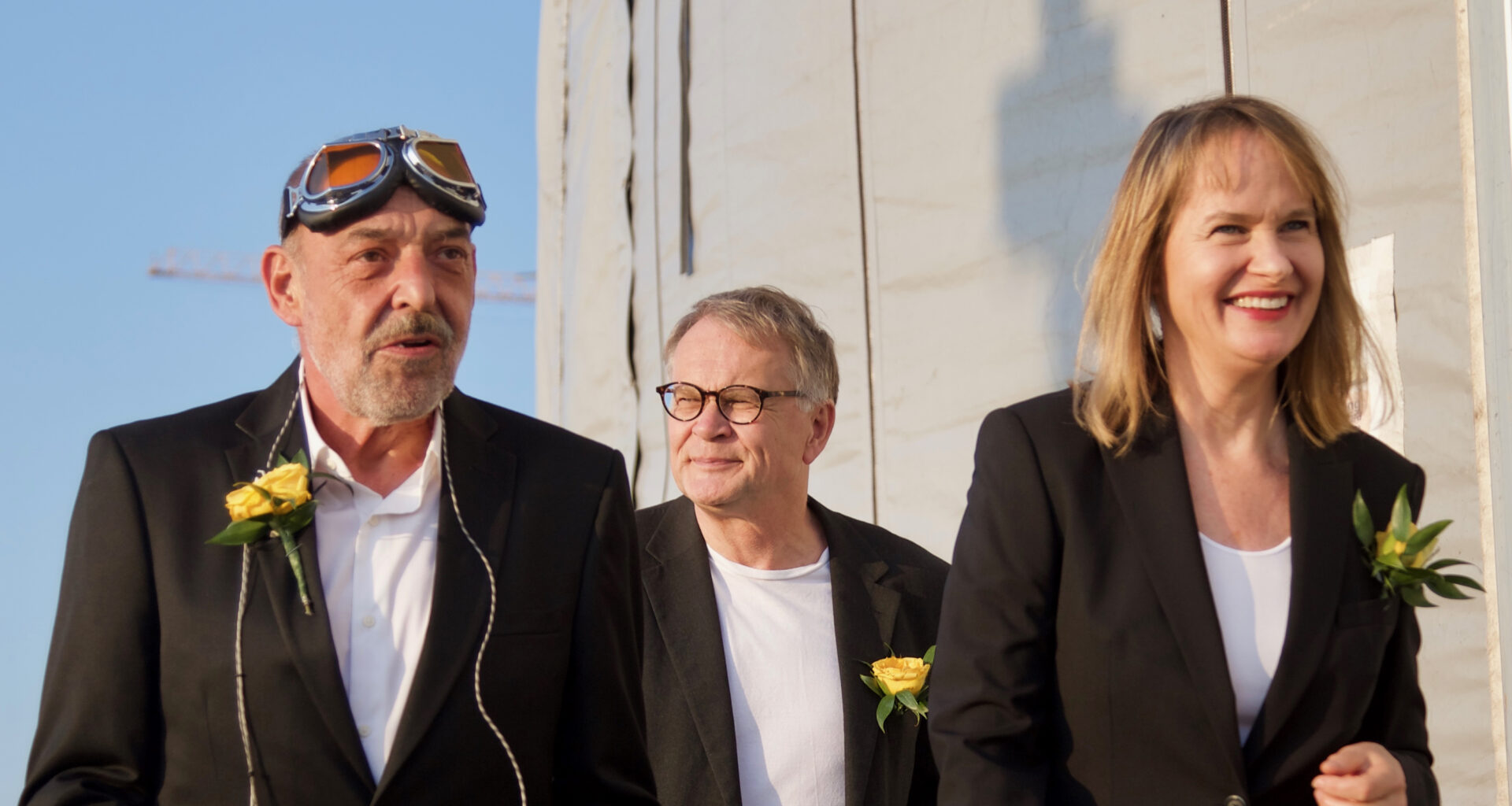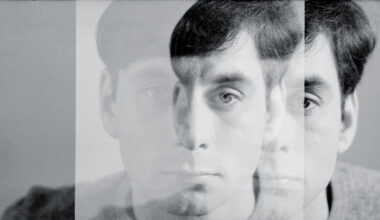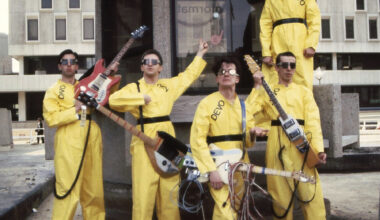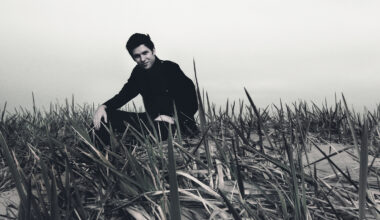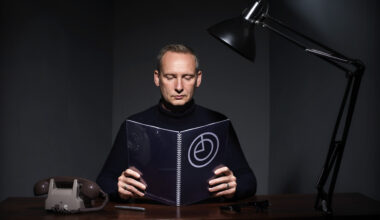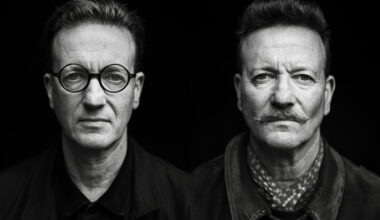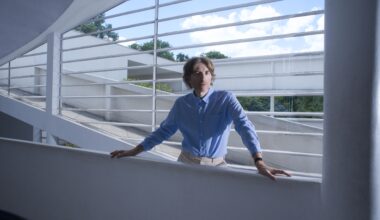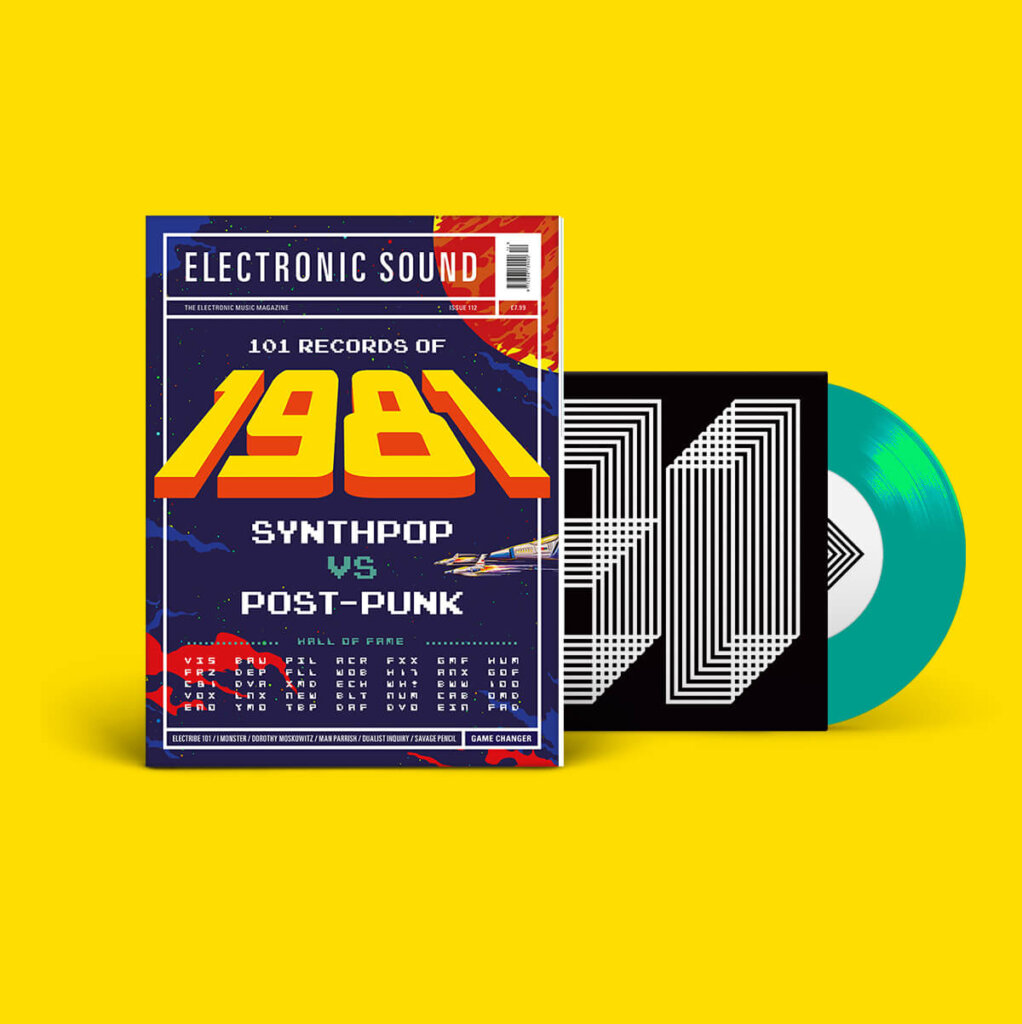It seems fitting that one of the most inventive acts of the 1980s has a back story you couldn’t make up. On the eve of a live reboot, Anne Dudley, JJ Jeczalik and Gary Langan tell the incredible tale of Art Of Noise. Are you sitting comfortably? Then we’ll begin…
It’s the beginning of the 1980s, South Wimbledon, London. Studio engineer Gary Langan has just bought a house. It’ll prove to be one of many catalysts in the strange genesis of Art Of Noise.
“God knows how I could afford it,” laughs Langan. “All I could do was buy the house and then I had to rent the rooms out.”
One of the rooms was occupied by JJ Jeczalik, who worked alongside Langan as part of Trevor Horn’s go-to production team, and who, along with Anne Dudley, would go on to form Art Of Noise. Fortuitously, as with so much of this story, Horn had just acquired a Fairlight CMI, the revolutionary sampler, and Jeczalik was nominated as its custodian, operator and handler.
“So suddenly we had a Fairlight in residence,” laughs Langan. “We stuck it on the dining table, which made the table worth more than the house! The house cost £21,750 and the Fairlight was £35,000. We had absolutely no idea of the power that was sitting in the dining room.”
The combination of Trevor Horn’s Fairlight and Gary Langan’s dining room is just the start of an unlikely tale that involves chance encounters, seasoned session players, revitalised prog groups, an abandoned drum track, unexpected chart success, anarchy, humour and classical musicianship. Oh, and Tom Jones.
“Art Of Noise ultimately came about with the intertwining of various career threads, paths that crossed a few times in the late 70s, early 80s,” explains JJ Jeczalik.
Though he would go on to become the producer of celebrated tracks by Pet Shop Boys and Stephen “Tin Tin” Duffy thanks to his unrivalled ability to handle the Fairlight, Jeczalik started out as a drum tech, lugging around and setting up a drum kit for various performances and sessions.
The kit belonged to Richard James Burgess, later to be Spandau Ballet’s producer, but at the time he was the drummer with Landscape, of ‘Einstein A Go-Go’ fame. Burgess had also worked on Trevor Horn and Geoff Downes’ Buggles project, so it turned out that Jeczalik’s first encounter with Horn would be backstage at ‘Top Of The Pops’, when Buggles and Landscape were on the same show.
Gary Langan’s first major recording credit was as co-engineer on Queen’s ‘Bohemian Rhapsody’, which, by any measure, is not at all bad for a first day at the office. He would gain his studio chops in the late 1970s at Sarm Studios in London’s Notting Hill, where he encountered Horn and Downes, becoming The Buggles’ engineer and then an integral part of the soon-to-be production outfit.
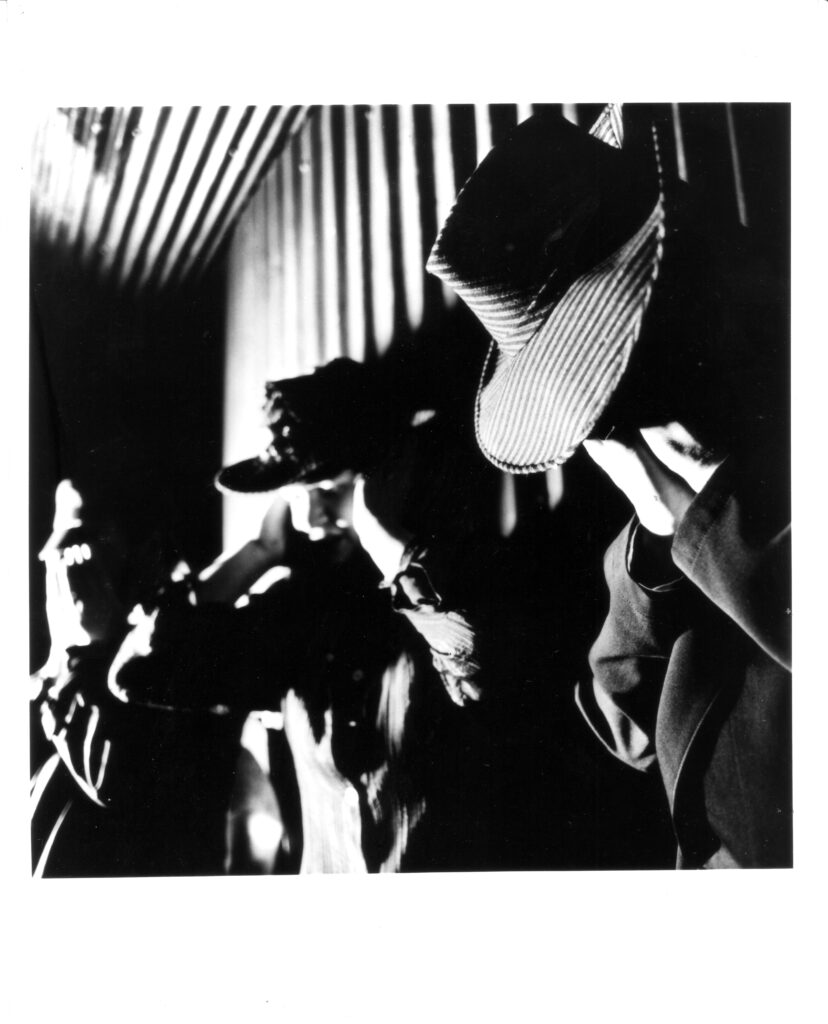
Langan also worked on sessions with Yes, who were trying to shake off their progginess and adapt to the shiny world of the early 1980s. Downes and Horn had became members of the band for the 1980 album ‘Drama’, with Downes replacing Rick Wakeman on keyboards, and Horn taking over from Jon Anderson on vocals. When the pair needed a tech for the project, they remembered bumping into Jeczalik at ‘TOTP’ and invited him to join their production team.
“It took me about a microsecond to agree,” recalls Jeczalik. At the same time, Horn was beginning to bring a talented young composer called Anne Dudley along to the studio.
“I’d met Trevor while we were both depping in a band,” recalls Dudley. “Trevor played bass, and I played electric piano and synth. We kept in touch and eventually I started playing sessions for him.”
Dudley soon became synonymous with the slick quality that Horn brought to the studio, extending her duties from laying down keyboard lines to scoring for strings on sessions and embellishing tracks with a grandiosity that very much wasn’t commonplace in early 80s pop music.
Along the way, Downes had acquired a Fairlight CMI, which was first deployed on the aforementioned Yes album. Such was the appeal of the machine, and the limited number of them in the UK thanks to the somwhat eye-watering price tag, that Jeczalik’s relatively unique ability to handle one saw him quickly in-demand as support at various sessions.
“I used to go to these parties at Syco Systems in Paddington where all the luminaries would turn up and everyone would try and understand how to use the Fairlight,” says Jeczalik. “The idea was that we’d get some interesting insights about how to use the bloody thing, because quite a lot of us didn’t really know what was going on.”
“Trevor bought a Fairlight slightly later than Geoff,” says Langan, picking up the story. “So when he needed someone to look after it, that was JJ again.”
Which brings us back to Langan’s financially-driven decision to rent a room to Jeczalik, and in doing so enhanced his dining room with some of the most powerful new electronic kit in town. It was a decision that allowed the pair to muck around on this phenomenally advanced piece of gear, but they still weren’t yet a group. The next step would again involve Yes, with Jon Anderson returning for 1983’s ‘90125’ and Trevor Horn in the producer’s seat, Langan engineering and Jeczalik manning the Fairlight.
“We’d visited virtually every studio in London,” chuckles Langan. “But we were now resident in the old AIR Studios on Oxford Street, and we’d set Alan West’s drum kit up on a riser in the middle of the biggest studio, Studio 1. We started to cut this track, and because of the timing and the speed and the decay time of the room, it was like the biggest drum sound I’d ever concocted.
“At the time, there was another chap in the industry called Hugh Padgham, and we were sort of vying for the top spot for best-sounding singles and best-sounding drums. As far as I was concerned, he was in the lead, because he’d done Phil Collins’ ‘In The Air Tonight’. When Alan started playing, I was sat there thinking, ‘Oh my God, I think I’ve got you beat!’.”
Langan was to be disappointed though when the band decided to scrap the track completely.
“There were tears in my eyes,” he admits, “but being the curator of the tapes I stashed the one that just had this drum track on it. For some reason, something was telling me to hang on to this particular tape. One day, the band decided to bugger off early and JJ was about to start packing up the Fairlight. At the time, people were sampling sounds into the Fairlight, but it would just be a snare drum, a bass drum, a this, a that. I just thought, ‘Sod this, why don’t we put the whole bloody drum kit into the Fairlight and see what it does?’.”
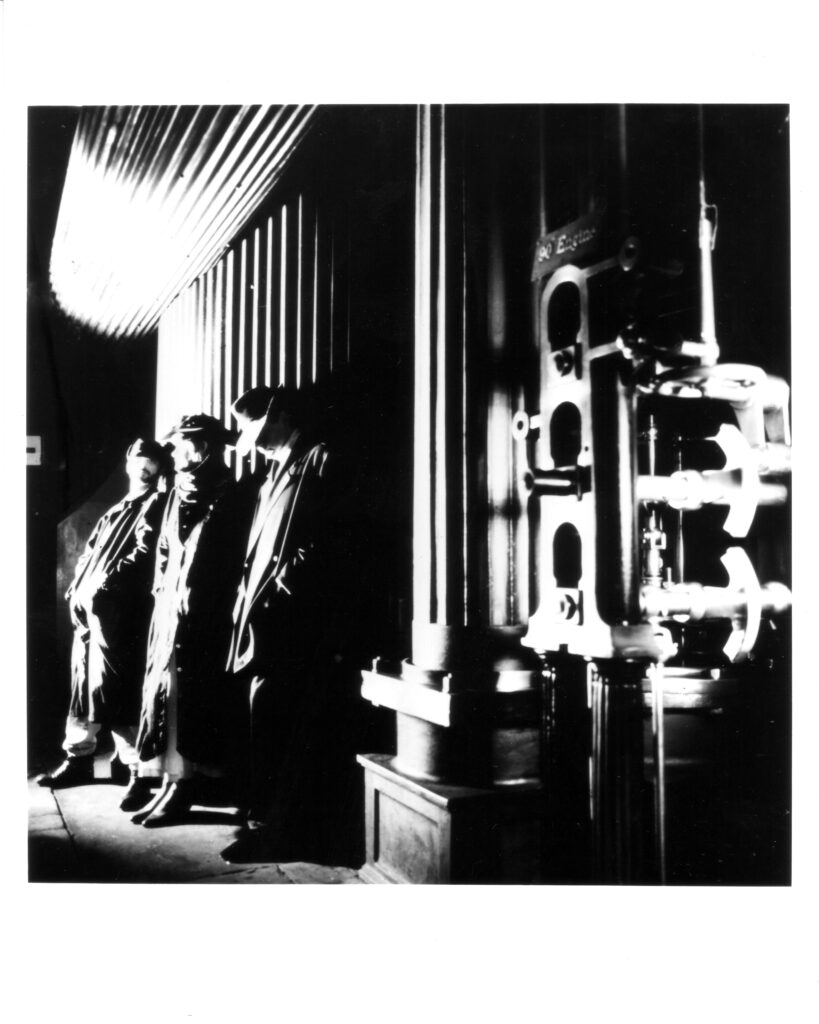
Jeczalik fired up the machine and did a mono mix of the drum multi-track by hitting the sample button on the downbeat.
“JJ played back what he’d sampled, and it just sounded all wrong,” recalls Langan. “What had happened is JJ had sampled on the third beat of the bar rather than on the downbeat.”
“I was thinking about something else at the time,” admits Jeczalik. “I wasn’t paying attention.”
“But without that moment we wouldn’t be here talking about Art Of Noise,” adds Langan. “We now had this sampled bar of drums where the emphasis was musically reversed, its accents were backwards. It was so revolutionary when we played it back. It sounded huge for a start, like cannons on the ‘1812 Overture’. It really was enormous.”
“And then we managed to loop it,” says Jeczalik of a fiddly process that involved lots of playing with the Fairlight’s Time Clock facility, a feat that still surprises the pair to this day. “Then off we went, just throwing any old sounds on top of it.”
It turns out that Alan White’s abandoned drum pattern and Jeczalik’s sampling error had yielded the rhythm for what became the original version of ‘Beat Box’, which would later appear on the first Art Of Noise EP, ‘Into Battle With The Art Of Noise’. Listening back now, what’s as surprising as that chunky beat is the sheer array of sounds that sit above it. Over the course of the 80s, the listening public became somewhat inured to the kleptomaniac manner with which producers would riddle their tracks with seemingly random found sounds, but in 1983, when ‘Into Battle With The Art Of Noise’ appeared, this was revolutionary.
“We had this potty element to us,” explains Langan. “We’d collect odd samples, mad things like on a bored Saturday afternoon we sampled the Wimbledon tennis championships, or one morning there was this guy who couldn’t start his car. For some reason we sampled it.”
On early Art Of Noise tracks, the effect was less a shambolic sampleadelic mess and more like the musique concrète experiments of the pioneering Pierres, Schaefer and Henry.
“Oh, it was definitely concrète,” agrees Langan. “One of the things that JJ and I noticed was that you could find a rhythm in everyday sounds, like somebody opening a door of a car. We were able to exploit that thinking and that’s how we managed to throw everything at the wall and let it stick.”
“The point was that we stuffed noises together that sounded good,” adds Jeczalik. “When Trevor listened to it, he said it needs a bit of music, you should get Anne Dudley in to make it sound nice.”
By now, Dudley had become Horn’s keyboard player of choice, working on the sessions for ABC’s ‘The Lexicon Of Love’ and Malcolm McLaren’s ‘Duck Rock’, which is where she first worked with Langan and Jeczalik.
“In some ways, I think ‘Duck Rock’ is a prototype Art Of Noise album,” reflects Dudley. “Malcolm had a similar free-flowing creative attitude to music. He was reluctant to ever take no for an answer, so we always had to find new ways of doing things, combining samples from many different sources and stretching the technology to the absolute limit.”
“When we were working together, Anne would come in and sit at the piano and bring all these tonal elements together and work them in,” says Jeczalik.
“It was magic,” adds Langan. “She neatened all the rough and ready edges.”
“Or perhaps it was that Gary and JJ coarsened, commercialised and brutalised what I was doing,” suggests Dudley. “It’s not true though – I just felt that all the beats should have some harmony and melody attached to them.”
“We’d have these wonderful harmonic structures and Anne would say, ‘You do realise you’ve written this in B minor 7?’ and we’d have no idea,” laughs Jeczalik. “She’d say, ‘Why is there a three/four bar and a one/four bar?’. I’d say, ‘Well, it ends up being four/four.’ ‘Ah,’ she’d say, ‘technically it isn’t four/four…’ and we’d go ‘Well, it just kind of works’.”
“I’ve never expected JJ and Gary to be competent keyboard players,” protests Dudley. “Everyone in Art Of Noise had their role, and we never trod on each other’s toes in the studio.”
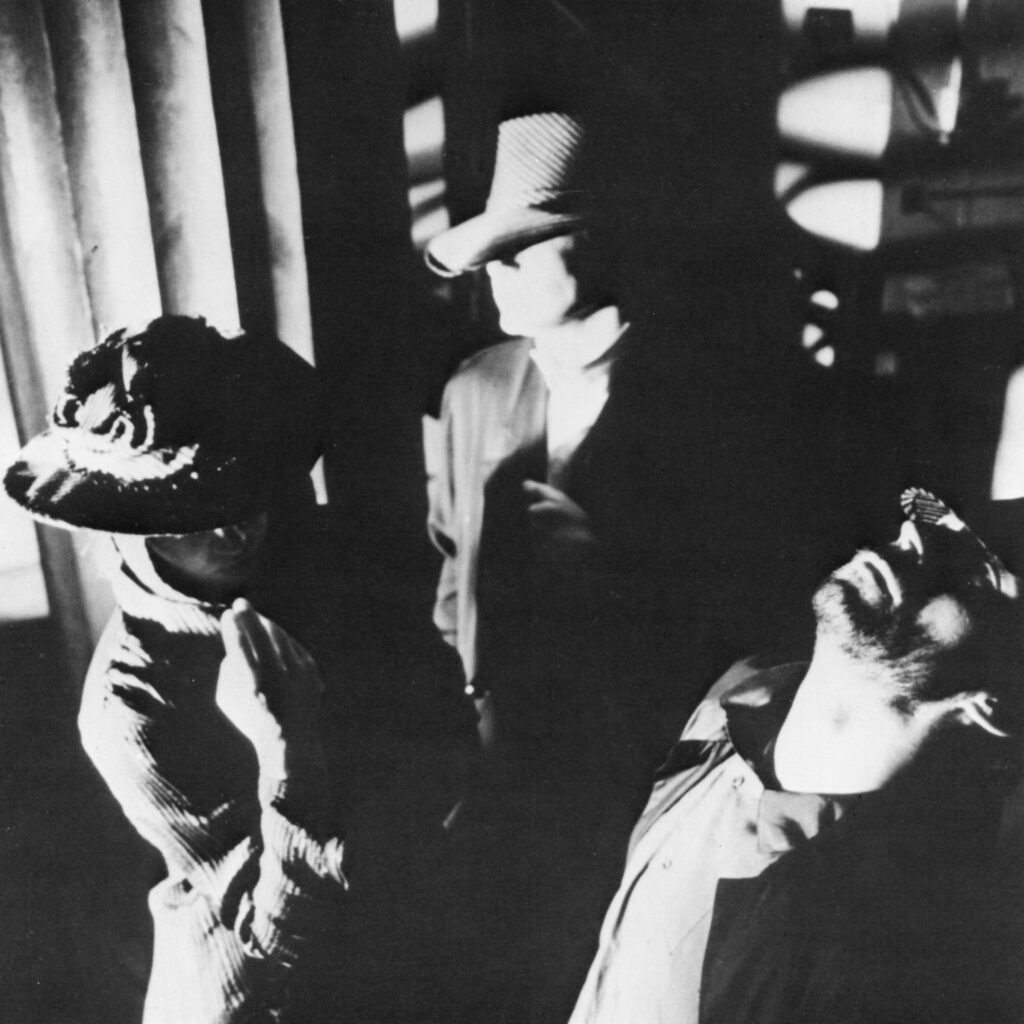
The first Art Of Noise releases were credited to the trio of Langan, Jeczalik and Dudley, as well as Trevor Horn and his ZTT label partner, ex-NME journalist Paul Morley. Although Jeczalik and Langan have, in the past, said that Horn and Morley’s contribution to Art Of Noise was negligible, Horn’s suggestion to bring Anne Dudley into the mix was pivotal, and Morley was the one who came up with trio’s name. The well-read journalist saw the connection between the band’s experiments with new technology and the turn-of-the-century Italian Futurist Luigi Russolo, whose ‘The Art Of Noises’ manifesto and his creation of primitive noise machines was seen as both novelty and avant-garde.
Novelty is a word that has occasionally been attached to Art Of Noise’s songs, which seems unfair given their creative process.
“There was an anarchy to it,” says Jeczalik, “We were fairly well versed in the pop genre, in terms of structuring songs, but we put in this rather weird and wonderful mélange, which we just giggled about. We just thought it was hilarious.”
“There’s quite a lot of humour in what we do,” agrees Langan. “I think the reason why people got what we were doing is because of the honesty that was behind the humour. We weren’t taking the piss, everything we did was from the heart. But anything and everything that the three of us do has to be have some humour in there. It cannot be deadly serious.”
Even by the standards of the time, Art Of Noise were a curious pop proposition. The meeting of their anarchic samples, curious attention to odd rhythms, and Dudley’s acute sense of melodic discipline separated them from their contemporaries, as well as providing a blueprint for a whole strata of dance music.
The music-buying public saw what they were doing as something new, innovative and fresh. Kids with ghetto blasters on NY streets embraced ‘Beat Box’ as if it had come from within their ranks and chill-out compilations have been dining out on ‘Moments In Love’ for years. Most noteworthy of all, perhaps, is that a trio renowned for pioneering the sampling process have themselves been sampled many times over.
By the time of 1986’s ‘In Visible Silence’, which is the focus of the trio’s current live shows, Dudley, Langan and Jeczalik had separated from ZTT and had found a knack for knocking out genuinely bonkers pop hits. ‘Peter Gunn’, recorded with legendary guitarist Duane Eddy was a Top 10 hit for the group, while ‘Paranoimia’ tapped into the cynical tech/media zeitgeist of the time with the addition of monologues from Max Headroom. Later, when Langan had left the band ahead of 1987’s ‘In No Sense? Nonsense!’ album, the stripped down duo of Dudley and Jeczalik had success with the theme music from the Dan Aykroyd and Tom Hanks reboot of ‘Dragnet’ and a curiously affecting collaboration with Tom Jones on their cover of Prince’s ‘Kiss’. All of which wasn’t necessarily what they set out to achieve at the very beginning.
“I never expected any commercial success at all,” reflects Dudley. “I just thought it’d be a creatively rewarding piece of experimentation. It was really quite perplexing to be plunged into the ‘Top Of The Pops’ and Smash Hits world of the 1980s where image was absolutely everything. That was not something that remotely interested me. Luckily, we had some brilliant people like Anton Corbijn around us, people who liked our work and who came up with some powerful imagery to support it.”
Dudley and Langan would go on to release one further album under the Art Of Noise moniker, 1989’s ‘Below The Waste’, prefacing a decade-long gap before the group would be heard from again. Considering the less-than-amicable split from ZTT after their first album, 1999 saw the release of ‘The Seduction Of Claude Debussy’, with Dudley (at this point the sole custodian of the Art Of Noise legacy) working once more with Horn and Morley, adding 10cc’s Lol Creme to the group. It was, with its classical overtones, spoken word sections and forays into drum ’n’ bass, a fundamentally different Art Of Noise.
“The point is that the dynamic of the group is totally dependent on the membership at the time,” says Jeczalik. “There were good bits here and there when it wasn’t the three of us, but in my view we had more good bits when it was the three of us together.”
“I think we work very well together,” agrees Dudley. “I mean, we more or less had ‘Moments In Love’ nailed in about two days and ‘Close (To The Edit)’ came about quite quickly from a mad bit of Gary’s keyboard playing. I think we were each perceptive enough to know when something happened that was good and that we needed to seize the moment. Because we weren’t composing normal songs with intros, verses, lyrics and choruses, there was a lot more freedom to be experimental.”
The anniversary re-release of ‘In Visible Silence’ at the turn of the century afforded Art Of Noise the opportunity to do something they hadn’t really done before – take their music out on tour.
“There was a tour-ette in 1986 when we went to Canada, America and a couple of shows in Japan, and one in the UK, but it wasn’t a major thing,” explains Jeczalik. “We had a band on stage with us and still the reviews said that for an act that uses a backing tape, we weren’t bad!”
For their current flurry of live shows, including a date at The British Library, the group’s approach is more akin to the studio set-up that produced ‘In Visible Silence’, only with better kit.
“I’ve just got the CMI V from Arturia,” says Jeczalik. “It’s a €300 bit of software with a sequencer, sampler, and sound editor. It’s based on the iconic green Fairlight screen and it’s 100 times cheaper than the original!”
“Doing the Art Of Noise now is every bit as complex as it ever was,” adds Langan. “I definitely don’t think technology has made it easier. Putting this whole thing together isn’t a simple process.”
“Live work is more of a challenge,” agrees Dudley. “The British Library gig will involve live mixing from the stage, so there may be moments of terror for all of us.”
Regrouping as the original trio for these dates raises the inevitable question of whether new music is on the cards, a subject on which all three are remaining rather tight-lipped for now.
“I can tell you how it would start,” says Jeczalik, after a pause. “It would start with Gary and I sitting down, and me going, ‘I’ve got these weird and wonderful sounds’ and Gary would go, ‘I’ve got this mad idea’, and the whole thing would start again. Then we’d get Anne down, and she’d beautify it, or maybe we’d raid the ‘Poldark’ soundtrack she composed. The way we’d do it would be different. I’ve got to say that being hunched over a computer for hours on end when you hit 60-something isn’t as appealing as it used to be.”
“The only thing that we’ve ever had to plan, in all of our years, is what we’re doing right now with the live shows,” says Langan. “So in terms of us writing something, or doing something together in the studio or whatever, I wouldn’t rule it out. Let’s just say the Fairlight hasn’t turned up in the dining room yet.”
Anne Dudley’s ‘…Plays The Art of Noise’ album is released by Island/Universal
